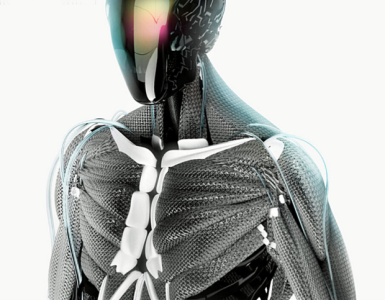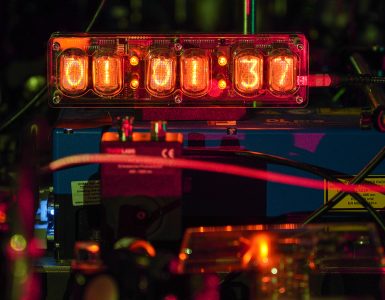When it comes to graphene, it appears that superconductivity runs in the family.
Graphene is a single-atom-thin material that can be exfoliated from the same graphite that is found in pencil lead. The ultrathin material is made entirely from carbon atoms that are arranged in a simple hexagonal pattern, similar to that of chicken wire. Since its isolation in 2004, graphene has been found to embody numerous remarkable properties in its single-layer form.
In 2018, MIT researchers found that if two graphene layers are stacked at a very specific “magic” angle, the twisted bilayer structure could exhibit robust superconductivity, a widely sought material state in which an electrical current can flow through with zero energy loss. Recently, the same group found a similar superconductive state exists in twisted trilayer graphene — a structure made from three graphene layers stacked at a precise, new magic angle.
Now the team reports that — you guessed it — four and five graphene layers can be twisted and stacked at new magic angles to elicit robust superconductivity at low temperatures. This latest discovery, published this week in Nature Materials, establishes the various twisted and stacked configurations of graphene as the first known “family” of multilayer magic-angle superconductors. The team also identified similarities and differences between graphene family members.
The findings could serve as a blueprint for designing practical, room-temperature superconductors. If the properties among family members could be replicated in other, naturally conductive materials, they could be harnessed, for instance, to deliver electricity without dissipation or build magnetically levitating trains that run without friction.
“The magic-angle graphene system is now a legitimate ‘family,’ beyond a couple of systems,” says lead author Jeong Min (Jane) Park, a graduate student in MIT’s Department of Physics. “Having this family is particularly meaningful because it provides a way to design robust superconductors.”
Park’s MIT co-authors include Yuan Cao, Li-Qiao Xia, Shuwen Sun, and Pablo Jarillo-Herrero, the Cecil and Ida Green Professor of Physics, along with Kenji Watanabe and Takashi Taniguchi of the National Institute for Materials Science in Tsukuba, Japan.
“No limit”
Jarillo-Herrero’s group was the first to discover magic-angle graphene, in the form of a bilayer structure of two graphene sheets placed one atop the other and slightly offset at a precise angle of 1.1 degrees. This twisted configuration, known as a moiré superlattice, transformed the material into a strong and persistent superconductor at ultralow temperatures.
The researchers also found that the material exhibited a type of electronic structure known as a “flat band,” in which the material’s electrons have the same energy, regardless of their momentum. In this flat band state, and at ultracold temperatures, the normally frenetic electrons collectively slow down enough to pair up in what are known as Cooper pairs — essential ingredients of superconductivity that can flow through the material without resistance.
While the researchers observed that twisted bilayer graphene exhibited both superconductivity and a flat band structure, it wasn’t clear whether the former arose from the latter.
“There was no proof a flat band structure led to superconductivity,” Park says. “Other groups since then have produced other twisted structures from other materials that have some flattish band, but they didn’t really have robust superconductivity. So we wondered: Could we produce another flat band superconducting device?”
As they considered this question, a group from Harvard University derived calculations that confirmed mathematically that three graphene layers, twisted at 1.6 degrees, would exhibit also flat bands, and suggested they may superconduct. They went on to show there should be no limit to the number of graphene layers that exhibit superconductivity, if stacked and twisted in just the right way, at angles they also predicted. Finally, they proved they could mathematically relate every multilayer structure to a common flat band structure — strong proof that a flat band may lead to robust superconductivity.
Read more at News.MIT.edu





